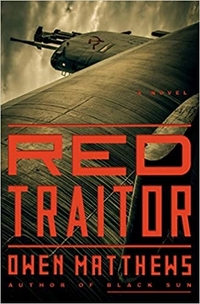A Song Everlasting by Ha Jin
 Friday, August 13, 2021 at 7:23AM
Friday, August 13, 2021 at 7:23AM 
Published by Random House/ Pantheon on July 27, 2021
A Song Everlasting tells the story of the tumultuous middle years of a man’s life. Yao Tian is a celebrated singer in China. He performs with the People’s Ensemble, a position that ensures social status and a comfortable lifestyle. Tian is married to Shuna, who also enjoys status as a professor. They hope their daughter will attend an American college because “universities in China merely fed students with platitudes and jargons, manufacturing the sort of minds needed by the governing apparatus.”
When the People’s Ensemble performs in New York, Tian surreptitiously meets with his childhood friend Han Yabin. Yabin lost his residential status in Beijing after he began to keep company with a foreign female teacher. Yabin responded by traveling to New York and not returning to China. Tian is concerned that meeting with Yabin might be a black mark against his record. He’s even more concerned when he’s offered a good bit of money to perform at a Chinese celebration in New York. He rebooks his return flight and accepts the gig, only to find after his arrival in China that his indiscretion has not gone unnoticed by Chinese officials.
Realizing that his passport will soon be confiscated, Tian flees China. He wants the freedom to travel, and more importantly to perform, internationally. He also wants the freedom to choose the songs he will sing, rather than performing propaganda songs that are selected by government bureaucrats. Shua agrees that he should establish residence in the United States so that he can be happy.
The novel follows Tian’s successes and struggles in America for a period of years. He needs to find a way to remain in the country legally. He’s not sure whether it will ever be safe for him to return to China. His initial successes in America stem from his popularity with Chinese audiences. Chinese authorities try to bribe him to return to China, then conspire to undermine him. A brief dalliance with a Chinese woman doesn’t help his relationship with Shua, while being accused of physically abusing her undercuts the popularity that he enjoys with Chinese audiences. Tian faithfully sends money home to support his daughter, but he and his wife seem to be drifting apart. He needs to find other ways to support himself when his singing career seems to be in jeopardy.
The tradeoff between freedom and security is the novel’s strongest theme. If Tian had stayed in China, singing the songs he was told to sing and saying nothing critical of the government, he might have lost self-respect but his prosperity would have been assured. Living in America assures Tian only of an uncertain future, but it also allows him to control that future, if only to the extent that he can choose the songs he wishes to sing. Tian feels no particular desire to express political opinions, but he does feel a desire to grow as an artist, something that he would never be able to accomplish in China.
Ha Jin’s novel is heartfelt, filled with moments of quiet drama while avoiding melodrama. It is realistic in the sense that Tian’s life might not work out as he hopes or expects. That’s true of every life. We can control what we can control, but some circumstances, including health conditions and the actions of others, are beyond our influence. Tian learns to accept that his fate isn’t entirely in his hands, but he also learns the value of not giving up the fight for the life he wants to have. His relationship with his wife might change because of his extended absence, but that change might open up the possibility of a new and unexpected relationship. He might not always be able to perform for large audiences, but he might find other ways to use his talent. A Song Everlasting reminds readers that being resilient, living according to your values, and persevering in the face of hardship can create a satisfying life, even if it isn’t the life we once envisioned.
RECOMMENDED
 TChris |
TChris |  Post a Comment |
Post a Comment |  China,
China,  Ha Jin in
Ha Jin in  General Fiction
General Fiction 


